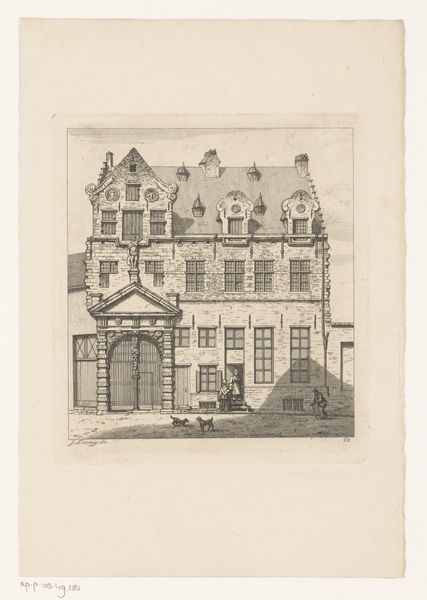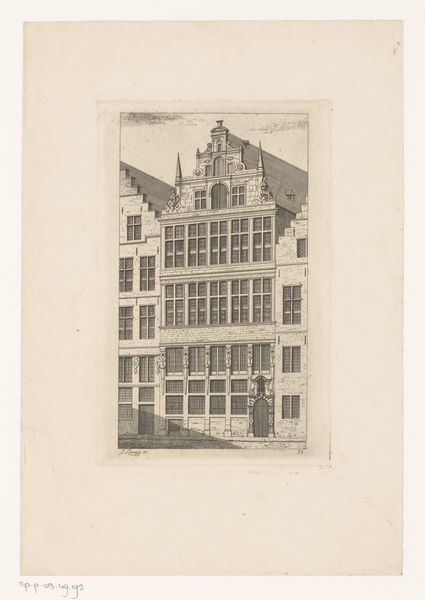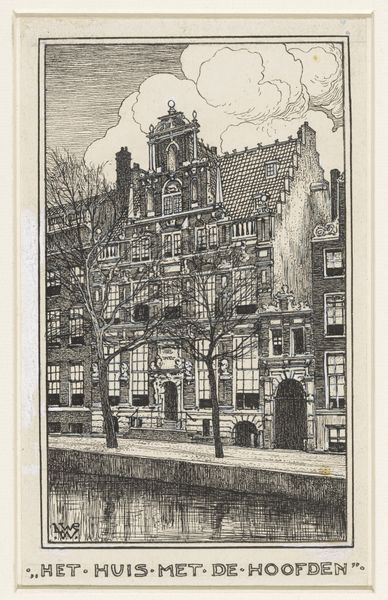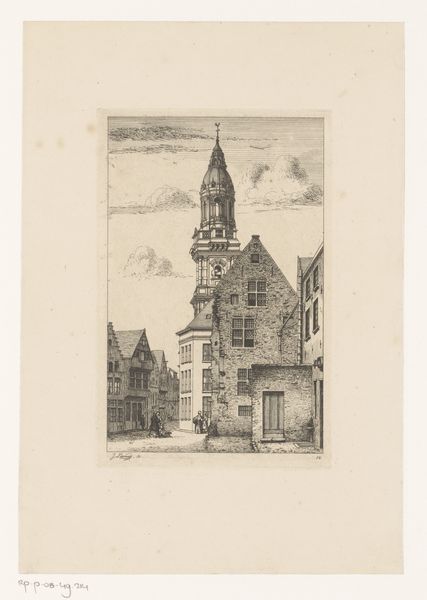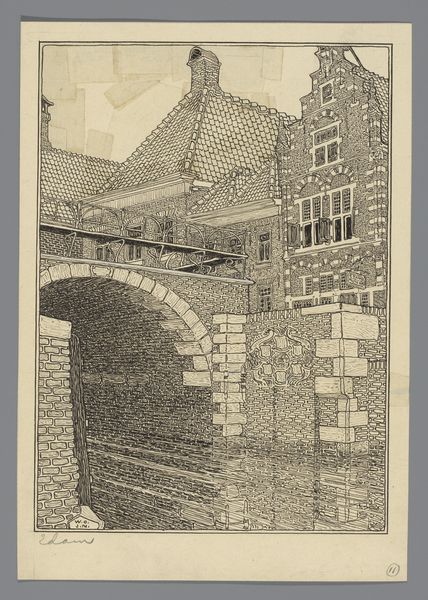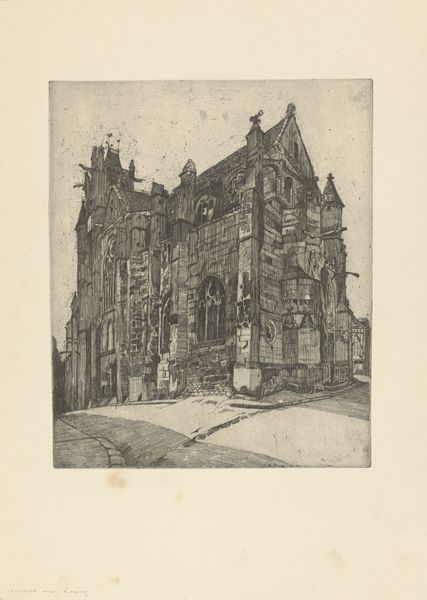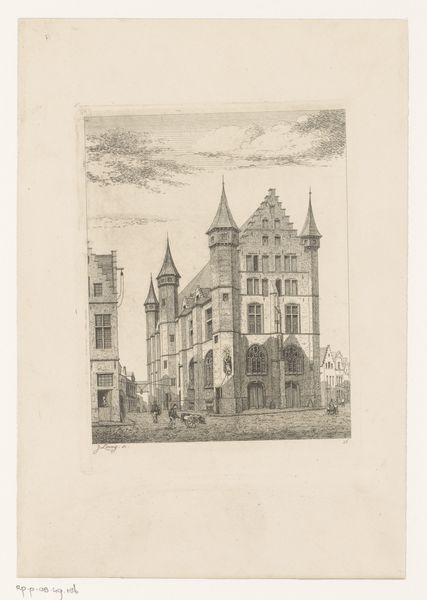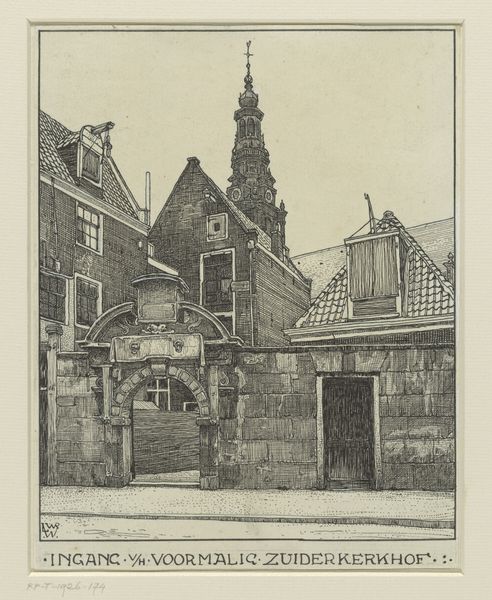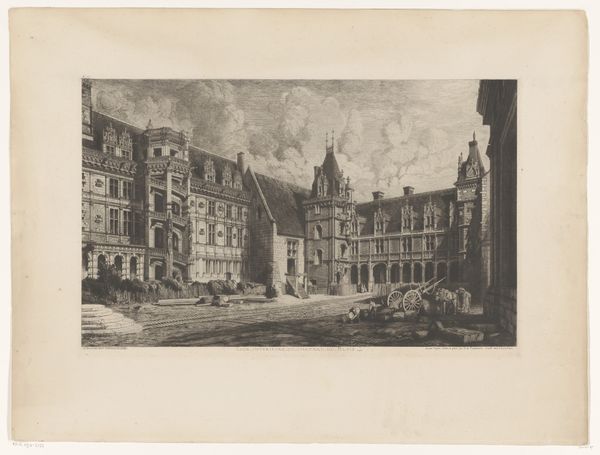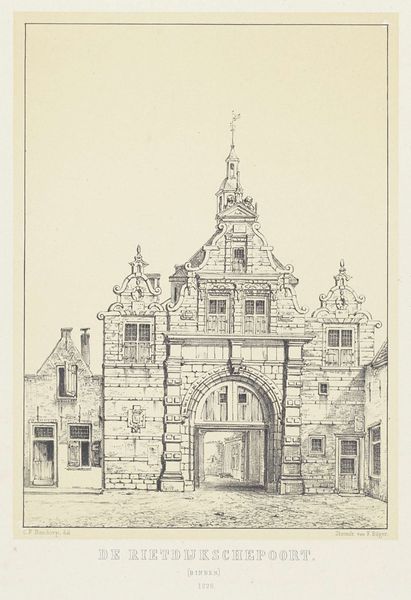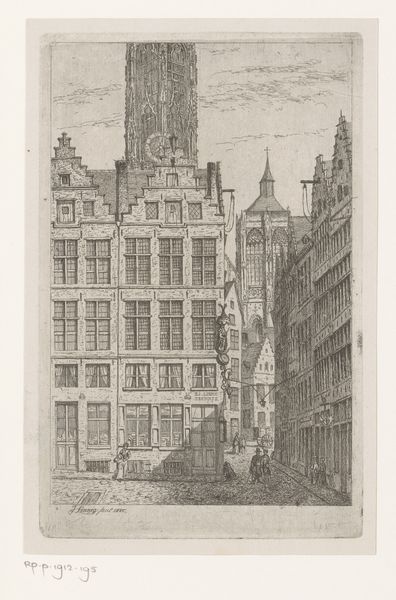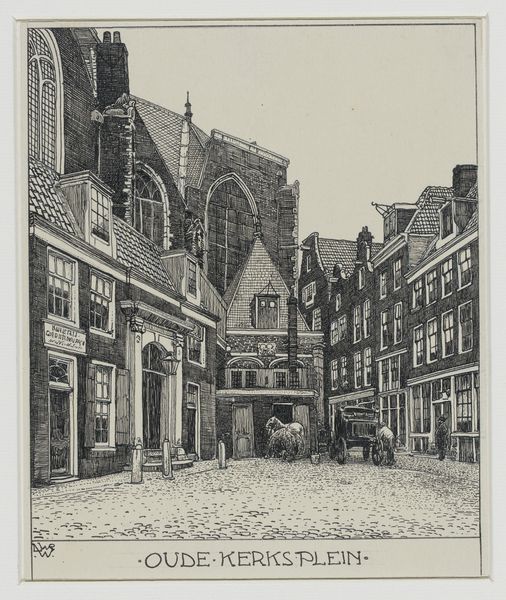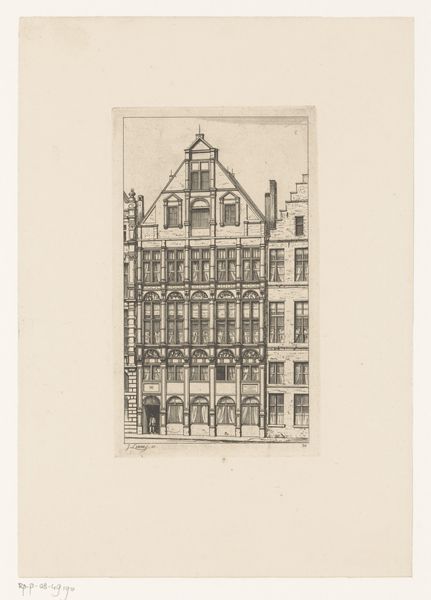
drawing, print, etching, ink
#
drawing
#
dutch-golden-age
# print
#
etching
#
landscape
#
ink
#
cityscape
#
realism
Dimensions: height 696 mm, width 498 mm
Copyright: Rijks Museum: Open Domain
Curator: Here we have Adriaan Terhell's "Gezicht op de Kerkboog in Nijmegen," created sometime between 1885 and 1934. It's a detailed print, likely an etching and ink drawing combination. Editor: The sheer precision! It almost feels like a photograph, but with a melancholic air, don't you think? The level of detail in the brickwork and the shadows on the cobblestones create such a stark, realistic image of that town square. Curator: Absolutely. Looking closely, the choice of printmaking allows for that extraordinary detail, emphasizing the labor-intensive process. The repetitive act of etching, the physical printing... it speaks volumes about the value placed on capturing this urban space. Was this about elevating craft to the level of high art, do you think? Editor: I think so. The archway itself is profoundly symbolic. Throughout history, arches represent transitions, thresholds, the passage from one state to another. Look at how it frames the street continuing beyond—a promise of something more. What lies ahead? Curator: The buildings themselves are fascinating. They demonstrate Dutch architecture, specifically how mercantile and social functions shaped design during the period. I can almost hear the conversations, the transactions taking place within those walls. Editor: Note also the small figure barely visible under the arch; so evocative! It transforms the scene, placing a humble human amidst solid architecture that speaks to power, commerce and permanence. Doesn’t the positioning hint at transience against enduring legacy? Curator: Definitely, and consider the materials used to construct these buildings, from the clay that makes up those bricks to the metal of the shutters—locally sourced and traded within this urban network. Material consumption is really evident here. It’s an index of Nijmegen’s economy in this era. Editor: It feels intensely grounded. So much symbolism within these sturdy architectural forms; echoes of collective history. Curator: An extraordinary visual record. Thank you for shedding more light onto this work. Editor: A pleasure, these enduring icons do contain such resonant clues.
Comments
No comments
Be the first to comment and join the conversation on the ultimate creative platform.
